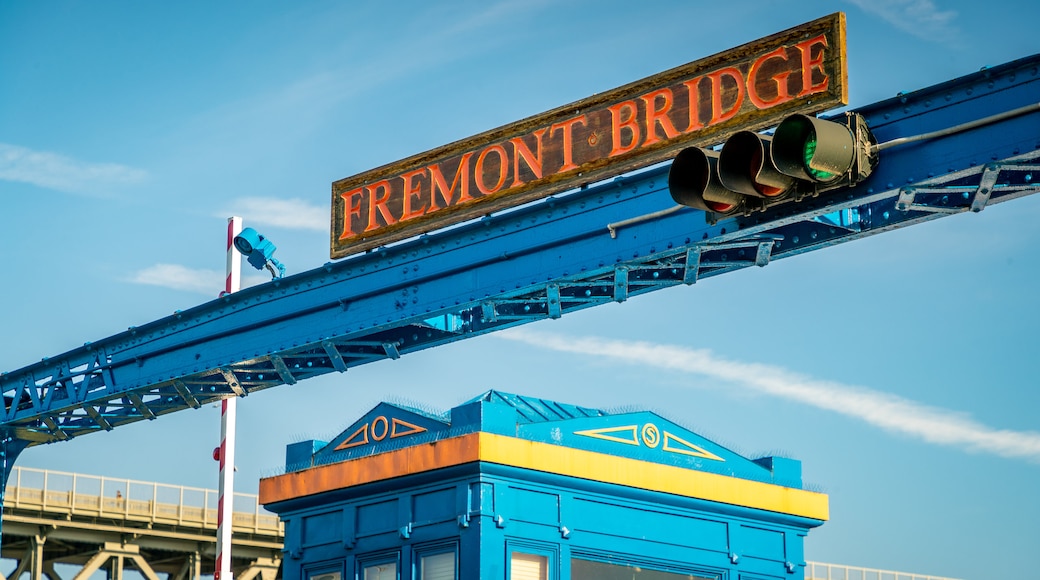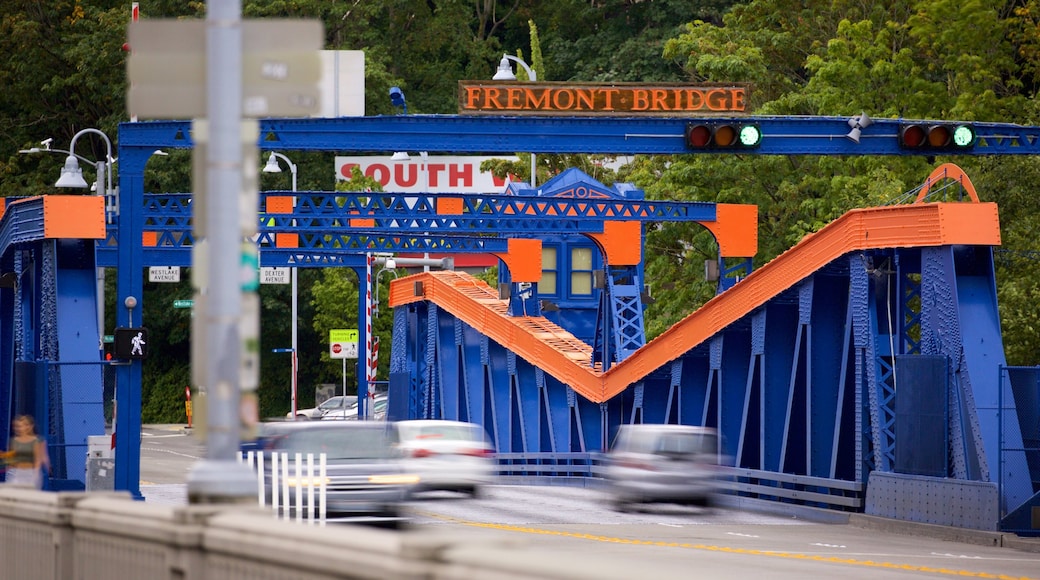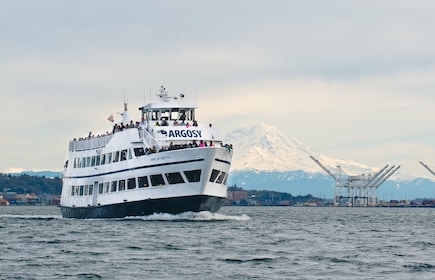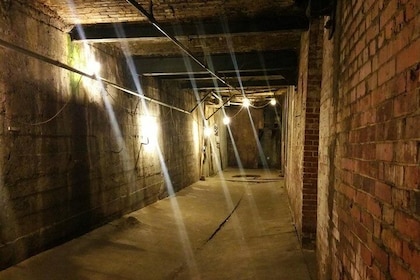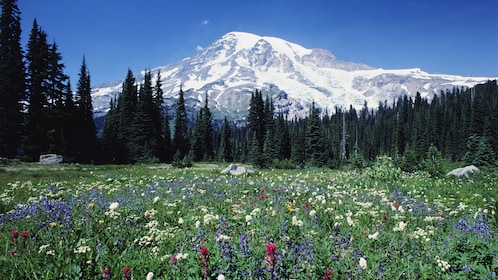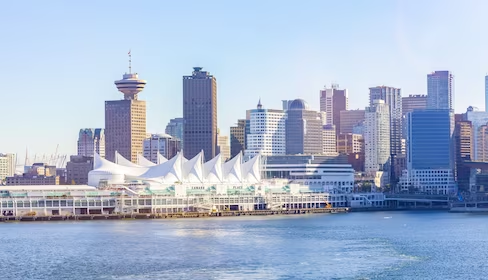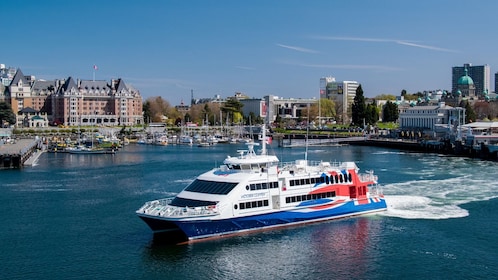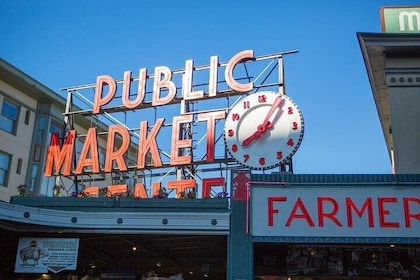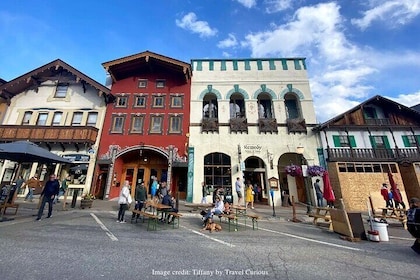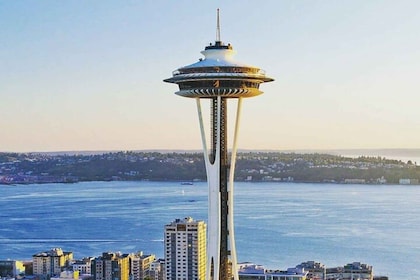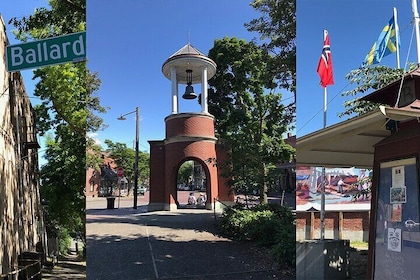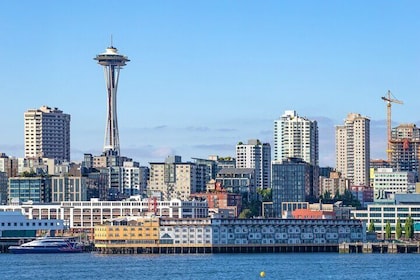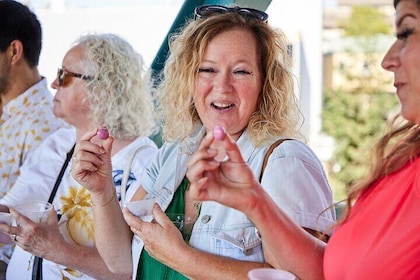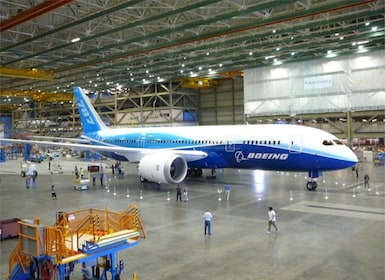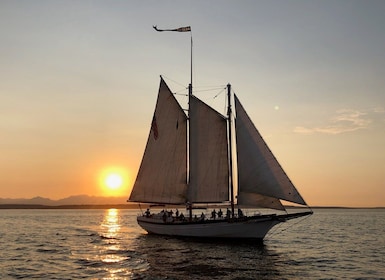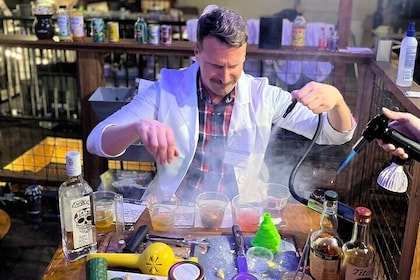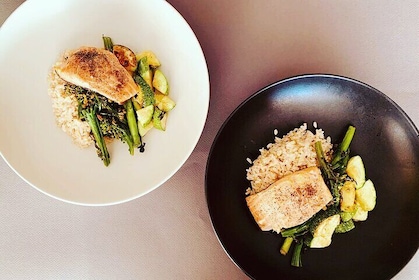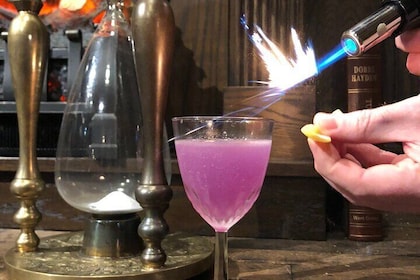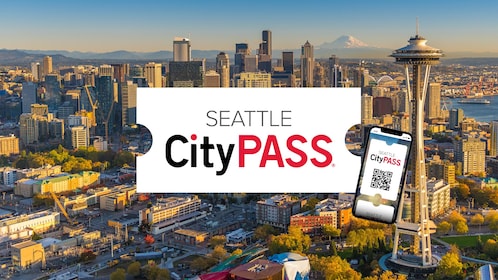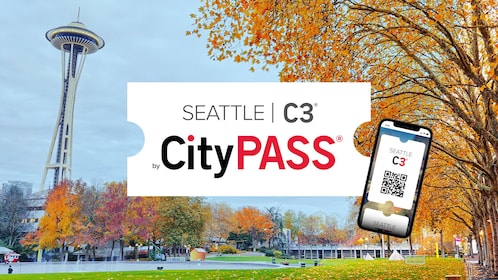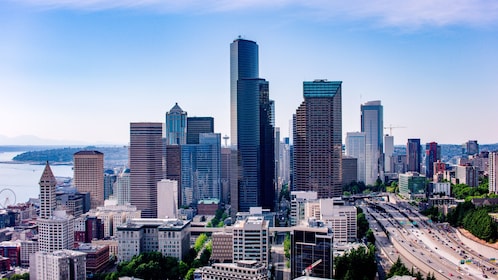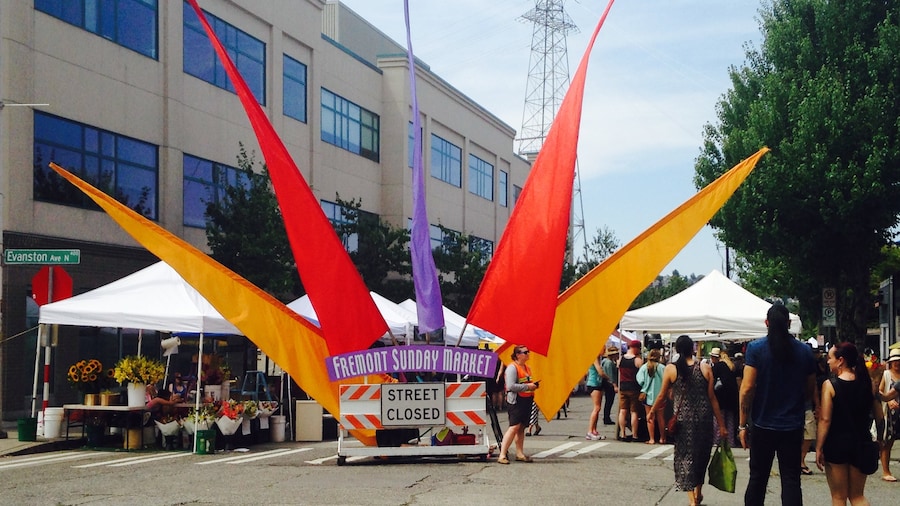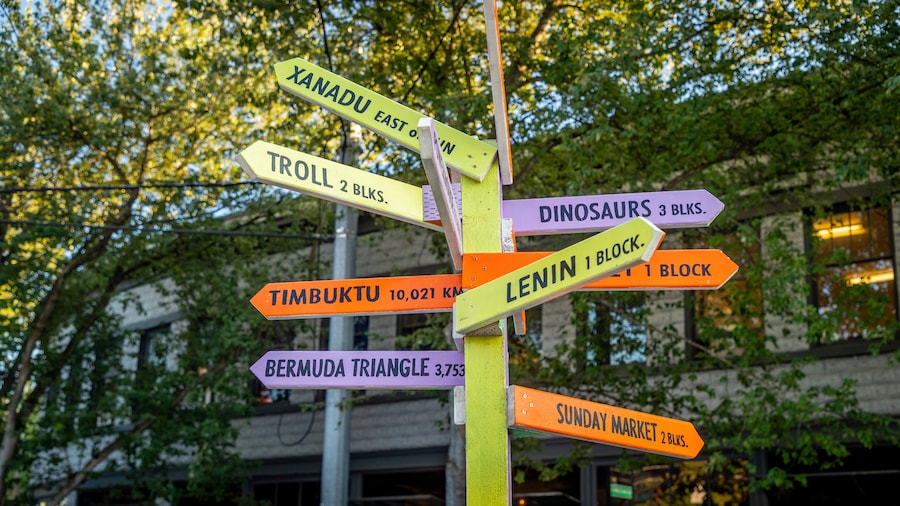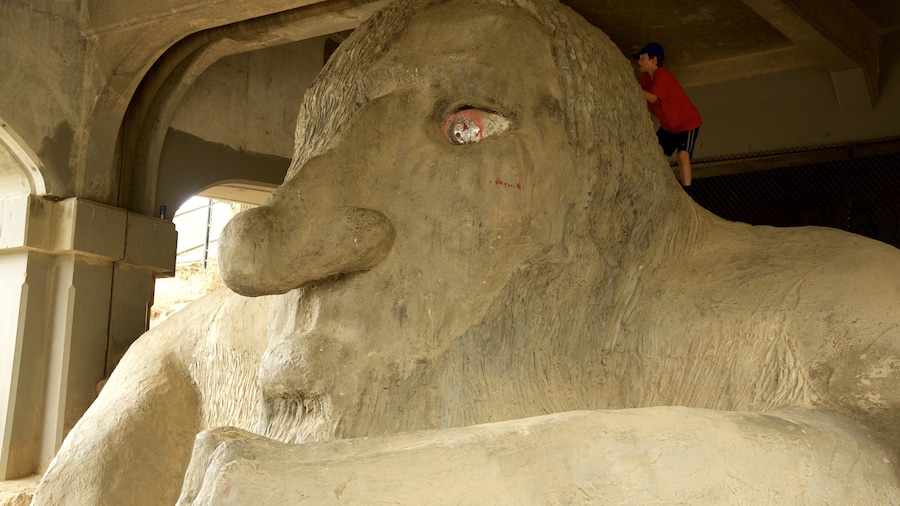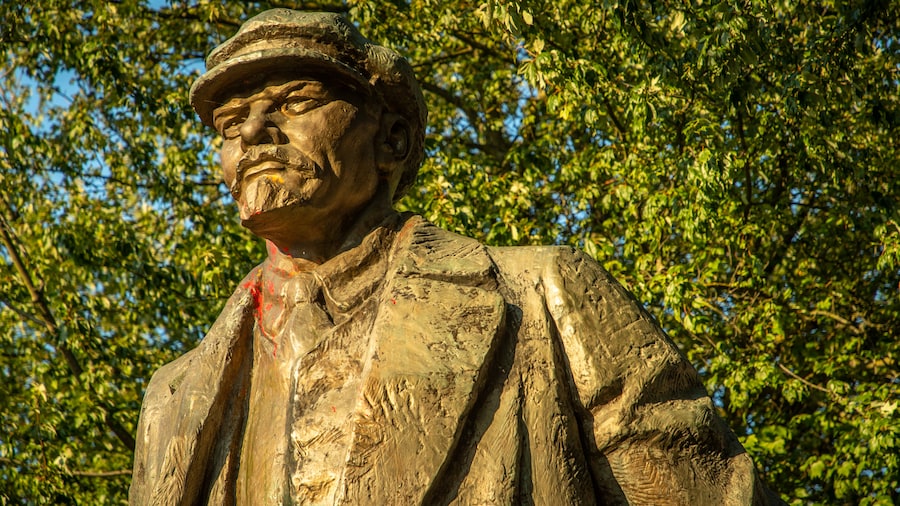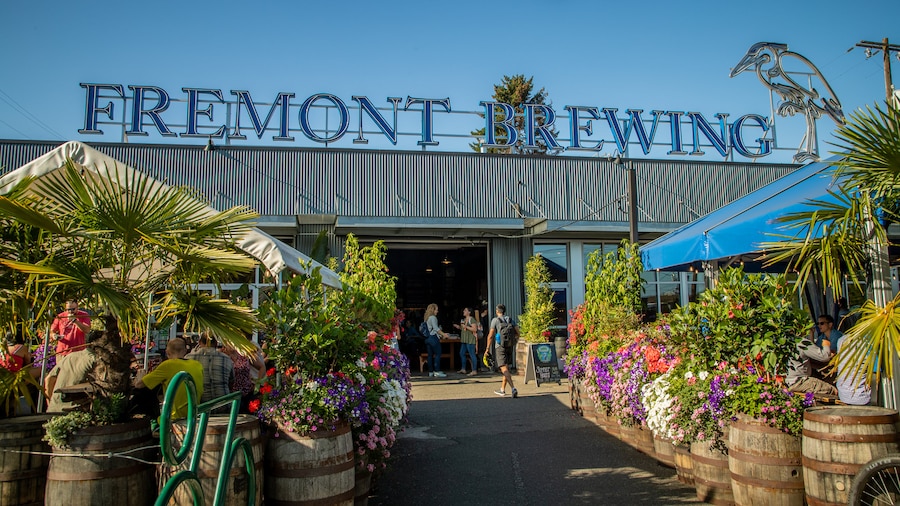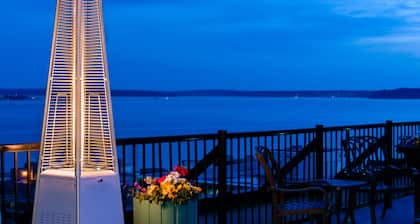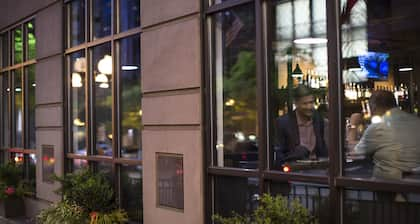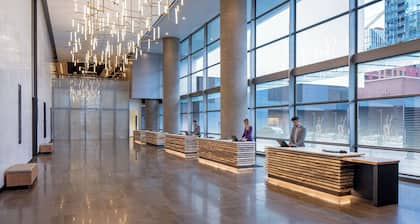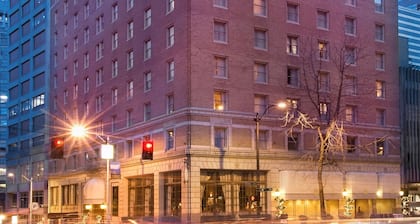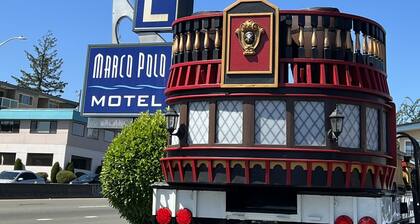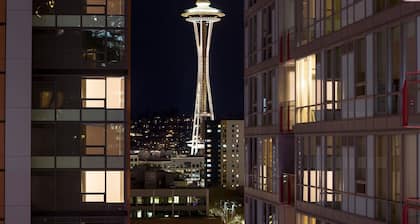Walk across the Fremont Bridge in both directions and gaze out from the sides. See the busy highway of Aurora Bridge to the east and leafy footpaths running along trendy office areas to the west. The bridge is a beloved feature in the landscape of Fremont, instantly recognizable for its orange and blue paint.
Fremont Bridge was opened on independence day in 1917 and has been in operation since then. The structure is one of the most frequently opened drawbridges in the U.S. Light rail tracks used to cross the bridge into Fremont, but the network closed in the early 20th century, sending the neighborhood into decline.
Inspect the Waiting for the Interurban statue. This cast aluminum sculpture of workers waiting for the now defunct railway is located near the northern end of the bridge. Today, a popular Fremont tradition involves dressing the figures up in clothes with personal meanings.
Wait to see the double-leaf bascule bridge rise to make way for water traffic. The busy waterway below means that the bridge raises its roads about 35 times a day so you won’t have to wait for too long to see it. While waiting to cross, look for a neon light in the shape of Rapunzel.
Stroll along one of the footpaths either side of the road crossing. Note the unique blue and orange painting of the girders, a color scheme that was voted upon by the people of Seattle in 1985.
Take some time to explore the nearby neighborhood of Fremont. Neighboring Aurora Bridge hides a colossal Fremont Troll sculpture, while the district itself is packed with lively markets, cool cafés and flamboyant festivals. Offices for Google and Adobe lie on the riverbanks directly next to the bridge.
Fremont Bridge links the neighborhoods of Fremont and Queen Anne, northwest of Downtown Seattle. Find bus stops on either end of the bridge, as well as walking routes along the river that provide some of the best views of the bridge in action.
